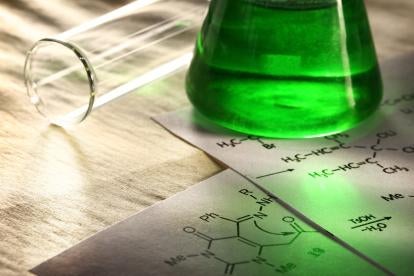After the Supreme Court’s recent decisions in Alice, Mayo, and Myriad that narrowed the bounds of patentable subject matter, defendants have routinely asked courts to invalidate patents in certain technology areas—such as software and biotechnology—as patent ineligible. A recent decision out of the District of Massachusetts offers a prescription for success for patentees in surviving such an eligibility challenge. In that case, the court denied a defendant’s motion to dismiss an infringement complaint concerning patents for tuberculosis testing methods.
 Oxford sued Qiagen in 2015, alleging that Qiagen’s tuberculosis test infringed six Oxford patents relating to methods for diagnosing tuberculosis using an in vitro test. Specifically, the test described in the Oxford patents uses concentrations of peptides that are components of the protein ESAT-6, which is produced by the tuberculosis bacterium. The peptides are mixed with the patient’s blood in a test tube to determine whether T cells in the blood produce cytokines—which is a response that indicates a previous tuberculosis infection. Oxford’s asserted claims may be generally categorized into two groups— test kit claims and method claims.
Oxford sued Qiagen in 2015, alleging that Qiagen’s tuberculosis test infringed six Oxford patents relating to methods for diagnosing tuberculosis using an in vitro test. Specifically, the test described in the Oxford patents uses concentrations of peptides that are components of the protein ESAT-6, which is produced by the tuberculosis bacterium. The peptides are mixed with the patient’s blood in a test tube to determine whether T cells in the blood produce cytokines—which is a response that indicates a previous tuberculosis infection. Oxford’s asserted claims may be generally categorized into two groups— test kit claims and method claims.
Qiagen subsequently moved to dismiss Oxford’s claims, arguing that the patents-in-suit are directed to patent ineligible subject matter. Qiagen asserted that because Oxford’s kit claims involve naturally occurring peptides, the claims are directed to products of nature—just like the claims invalidated by the Supreme Court in Myriad. Qiagen further contended that Oxford’s method claims do not involve an inventive concept (under the Mayo test) because the method steps are inherent to practicing the natural law and the testing methods are routine and conventional.
In response, Oxford asserted that the peptides are not products of nature because they are synthetic and exhibit different behavior from naturally occurring whole ESAT-6. Oxford also argued that its in vitro testing method is, by definition, performed in a lab and thus cannot be a product of nature. Finally, Oxford submitted an expert declaration to highlight the substantial improvements in speed and fewer false positives realized by the in vitro test over existing skin tests for tuberculosis.
To resolve the eligibility issue, Magistrate Judge Cabell analyzed the claims using the two-part Mayo test: (1) whether the claims are directed to a product of nature, and if so, (2) whether the claims recite an inventive concept that is significantly more than the law of nature to render the claims patent eligible.
For step one, Judge Cabell determined that the peptides have not been changed from their naturally occurring state, merely isolated. Judge Cabell’s recommendation also indicated that the fact that the peptides act differently than an intact ESAT-6 protein does not affect the analysis because the result is the same in both cases: production of cytokines by the T-cells that have been exposed to tuberculosis bacteria. Therefore, Judge Cabell reasoned that the kit and method claims are directed to a product of nature.
For step two, Judge Cabell determined that because the patented in vitro test “improves on existing methods for diagnosing TB by making diagnosis more convenient, less dependent on a physician’s subjective interpretation of results, and more accurate,” the method claims appear to include an inventive concept that is sufficient to overcome Qiagen’s motion to dismiss. However, Judge Cabell determined that because the kit claims merely describe the peptide panel and did not involve the in vitro test, those claims were not drawn to eligible subject matter.
Both parties objected to the findings in Magistrate Judge Cabell’s Report and Recommendation (“R&R”). In reviewing the matter, District Judge Gorton sustained Oxford’s objection that the R&R incorrectly invalidated the kit claims. Judge Gorton reasoned that, unlike the claims in Myriad, the claimed peptides “are alleged to be chemically different than the naturally occurring amino acids” in ESAT-6, which “purportedly results in the peptides behaving differently” in the in vitro test than ESAT-6 would. Thus, Judge Gorton concluded that a plausible reading of the patent may result in patent eligibility which is all that is required for claims to survive at the motion to dismiss stage.
Judge Gorton overruled Qiagen’s objection that the R&R incorrectly deemed the method claims patent eligible. Accepting Oxford’s factual allegations regarding the significant improvements realized by its in vitro test as true, Judge Gorton found those facts sufficiently exhibited an inventive concept under step two of Mayo to thwart Qiagen’s motion to dismiss.
Therefore, Judge Gorton’s order adopted the R&R’s findings on the patent eligibility of the method claims and rejected the R&R’s findings on the patent ineligibility of the kit claims, leaving all of Oxford’s claims intact at this stage of the case.
The analysis of the subject matter eligibility issues in this case, as set forth in both the R&R and the Court’s order, provides helpful contours for litigants to use in framing their own pleadings on this contentious and still-uncertain topic. Patentees may want to consider whether they can point to any significant improvements realized by their inventions over existing techniques—especially where their claims may involve laws or products of nature.
The case is Oxford Immunotec Ltd. v. Qiagen, Inc. et al., Action No. 15-cv-13124-NMG, before Judge Nathaniel M. Gorton and Magistrate Judge Donald L. Cabell. A copy of the Magistrate’s Report can be found here, and a copy of the Court’s Order can be found here.



 i
i

